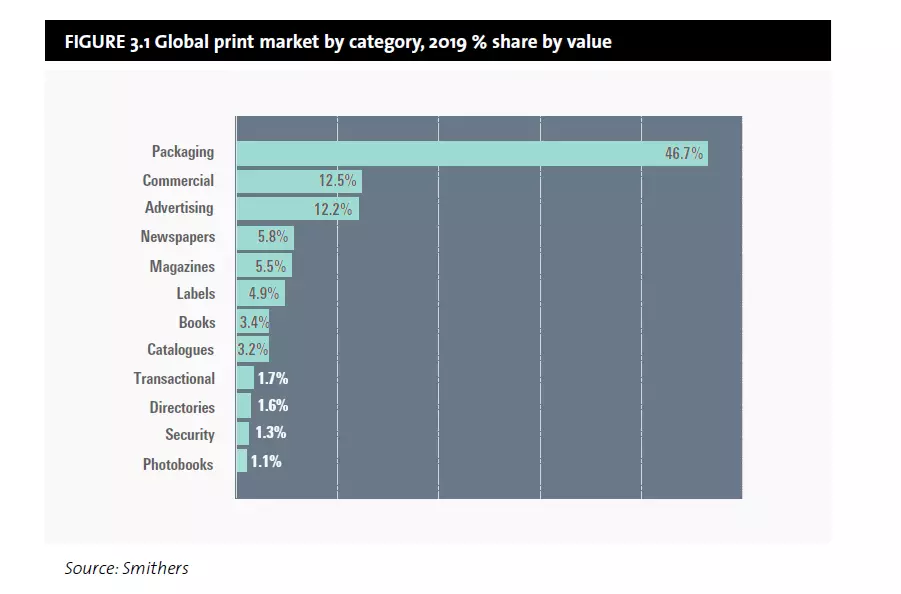Global printing market to be USD 874 bn in 2024
The worldwide print industry remains in a stage of transition. Total print volumes are forecast broadly and unchanged at 49.5 trillion A4 sheets between 2019 and 2024. During the same period overall value will increase at 1.3% year-on-year in real terms, from USD818 billion in 2019 to USD874 billion in 2024. This illustrates that value-adding potential still exists.
18 Feb 2020 | By Aultrin Vijay
These are the headlines from Smithers latest market report, The Future of Global Printing to 2024. The report says, there will be a moderate increase in growth in the global print market across the next five years, as the industry adjusts to new product demands, more flexible business models, and a shift in geographic emphasis.
The worldwide print industry remains in a stage of transition, with an impetus to refocus on emergent market opportunities, especially in packaging print, and those segments where print service providers can adapt to deliver higher value, shorter run work.
Smithers’ analysis for The Future of Global Printing to 2024
Print demand continues to shift. Commercial print (advertising, promotional products, security, transactional mail, etc) is seeing declining volumes. As is most of publications print (newspapers, magazines, directories and catalogues, etc), although book printing is returning to growth. In contrast packaging and label work is booming. This is leading to a new focus from print service providers and the development of new equipment dedicated to specific packaging substrates.
Print volumes are increasing quickest in transition economies. Of the fastest growing national print markets 2014-2024: three are in Latin America, three in Eastern Europe, two in the Middle East and Africa, and seven in Asia. In response OEMs and ink suppliers are globalising their sales forces and partnering with local firms.
Print equipment sales will follow these broader market trends – overall equipment sales will fall marginally across the forecast period. Decline in demand for analogue systems will be highest, with genuine growth driven by a new generation of higher productivity inkjet machines, boosted by improving print quality that is eroding another barrier for transitioning to digital.
The drive to digital production will be reflected in analogue equipment design, with greater automation of press operation and the moving of many finishing operations inline. Hybrid configurations are helping add greater flexibility to some analogue platforms – mainly flexo.

OEMs are keen to diversify their equipment portfolio. The emphasis on inkjet systems means many are now finding new opportunities in functional and industrial print, including interior décor, electronics manufacture, 3D printing, and direct-to-object work. Overall this segment will grow at 7.0% year-on-year through to 2024.
Smithers latest report, The Future of Global Printing to 2024
The Future of Global Printing to 2024











 See All
See All